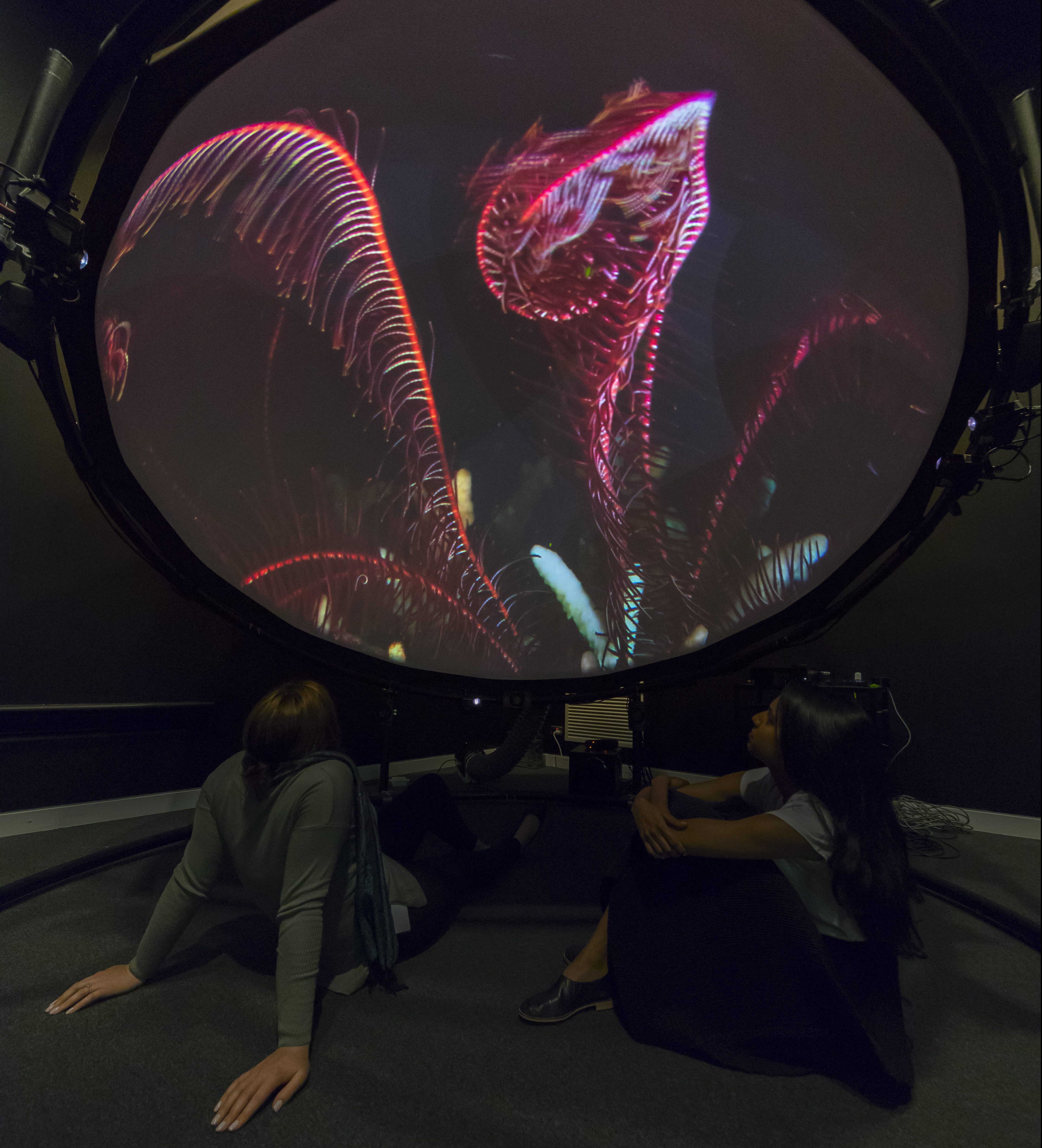By Catherine McLeod
Featured image artwork by Lynette Wallworth. Coral: Rekindling Venus, 2012. A video work for full dome digital planetariums. Duration: 45:00.
Images courtesy of Mark Ashkanasy
Creativity has long been used as a tool to inspire political action and drive change. Artistic movements have been a way to both critique and document humanity; often responding to the natural world and our relationship with it.
Environmental art has become increasingly important as a form of activism; harnessing environmentalism and creativity to inspire sustainability and climate change action.
The movement has grown exponentially, and includes artists like John Sabraw, whose Toxic Art involves the production of bold pigments from the oxidized runoff from abandoned coal mines. American photographer Chris Jordan, in his series Intolerable Beauty, captures the macabre excess of waste caused by American hyper-consumption. Belgian artist Naziha Mestaoui spearheaded the 1 Heart 1 Tree project, which began with the Eiffel Tower in 2015, and allows people to “plant” virtual trees to be projected on monuments around the world. Donations fund the illuminations, and for every simulation a real tree is planted as part of a global reforestation program.
Important work in environmental art has also been taking place at RMIT. From May to July this year, RMIT Gallery hosted Ocean Imaginaries, which featured the work of twenty local and international artists across a range of mediums. It explored the ocean as a symbolic entity, as well as an ecosystem that has been affected by our way of life.

Associate Professor of Art at RMIT, and head of the AEGIS Research Network, Linda Williams was the curator behind Ocean Imaginaries. While planning the exhibition, Williams sought out artists that focused on both the poetics of the ocean and wider environmental issues. She is a proponent of the power of art, which she claims can “influence our hearts and minds a way that a table of statistics cannot.” But instead of dismissing factual and scientific findings as unimportant, she believes that artists can interpret and communicate said information in different ways.
Throughout March, RMIT’s First Site Gallery was home to Anthropocene, in which students exhibited works exploring the connection between art, textiles, fashion, design and geology in this age of human impact. Zoe Jackson is a Fine Arts student who had four works featured; three embroidered pieces made from found materials including plastics, ribbons, wire, and beads, and a sound compilation made from voice memos recorded in both urban and rural places. While environmental issues were not at the forefront of the creation of these pieces, her invitation to enter the exhibition prompted her to realise that they are actually inherent in the way she gathers resources and generates work. She believes that art can “bring something to the surface that people don’t usually engage with,” while allowing issues like climate change to be “addressed in a way that’s accessible.”
So far, scientific data hasn’t been able to sufficiently influence the way our society thinks about the environment or considers its future. Maybe a more emotional response is required; the kind that only the arts can create.
Ocean Imaginaries was a part CLIMARTE’s ART+CLIMATE=CHANGE series for 2017, a festival of exhibitions and events focused on the power of art to inform and engage audience action on climate change.



